Buyer’s Guide to Force Plates
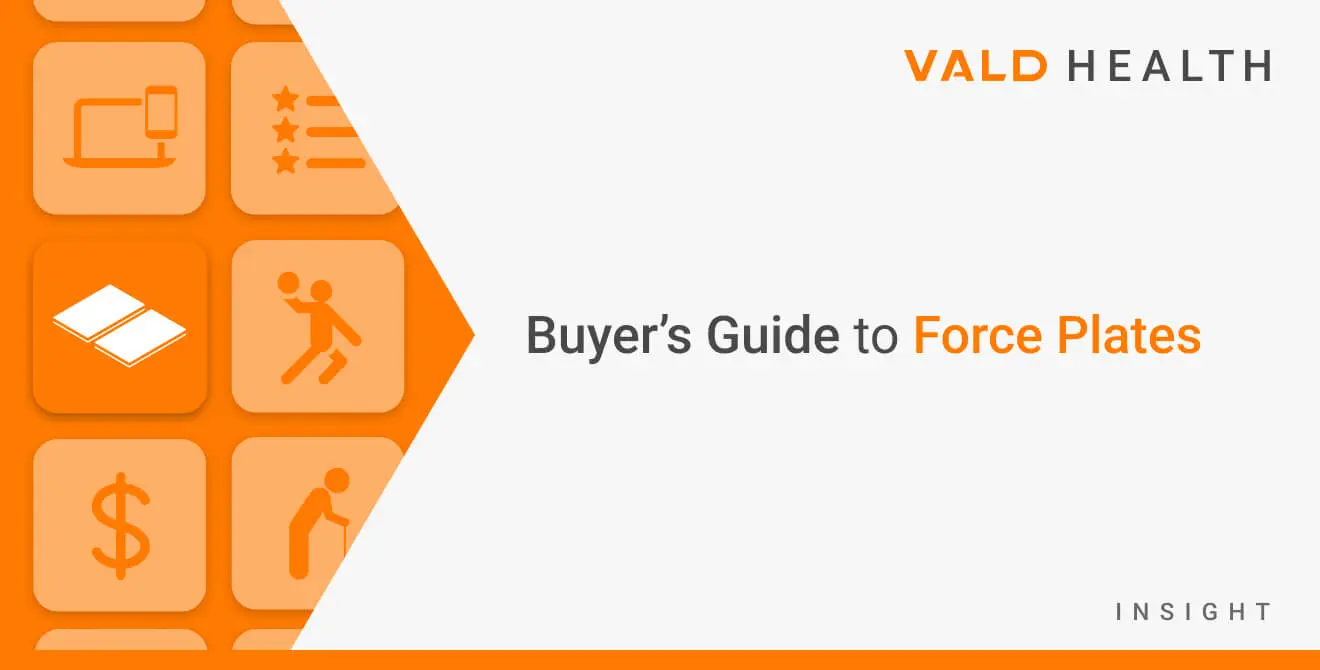
In recent years, force plates have become a mainstay in health, sport, tactical and academic sectors. Whereas historically, only a few highly complex and expensive options existed in the market, there is now a wide array of force plate brands and models accessible to practitioners in the field.
Before reading on, if you’re new to force plates and want to know what they are and why they are increasingly being used by health and performance professionals for managing patients, athletes and personnel, start your knowledge journey here.
Okay, so now you know what force plates are and the benefits of using them. Now it is time to work out which force plates are most suited to your setting (or settings for those on the move – which is an important consideration in deciding the right force plates for you). Like most things in life, talking to an expert in the field can often be the best way of getting information tailored to your circumstances.
We’ve written this article to give you a basic overview of the things to consider to help inform your decision. When purchasing force plates, there are three main questions you need to ask: who, what and where:
Who are you going to be conducting your force plate testing with?
Are they professional athletes? Are they youth, adult or geriatric population? Are they patients recovering from an injury or surgery?
What are you looking to measure with your force plate testing?
Do you want to test balance, plyometric performance, isometric strength (lower body or upper body), asymmetry or gait?
Where are you going to be conducting your force plate testing?
Do you work from a gym, a clinic, a hospital, in a university research lab or are you mobile, taking your services directly to your clients?
Your answers to each of these questions will help inform which force plates are most suited for you. A good starting point for answering the who, what and where questions is understanding the types and specifications of force plates, such as:
- embedded vs. portable plates,
- single plate vs. dual plates, and
- uniaxial (measurement of vertical forces only) vs. triaxial (measurement of force in three dimensions) plates.
For example, if you wish to analyze gait and running, you’ll likely need an embedded, multi-plate, triaxial solution (similar to what you would find in many universities’ biomechanics research laboratories).
…if you wish to test jumps, functional movements, balance and isometric strength…a portable, dual-plate, uniaxial solution will be more than capable…
This configuration is comparatively much more complex and expensive than if you wish to test jumps, functional movements, balance and isometric strength, in which case a portable, dual-plate, uniaxial solution will be more than capable of achieving this at an affordable price for clinics and gyms.
VALD’s ForceDecks Dual Force Plate System has been designed to make research-grade technology (read: accurate and reliable) accessible to coaches and practitioners in a variety of settings. Our goal is to deliver maximum value at a price point that is affordable to clinics, gyms and schools, whose feedback is constantly turned into advancements in ForceDecks technology.
With nearly a decade of experience in force plate technology in applied settings, we have narrowed our ForceDecks range down to three models of force plates.
|
ForceDecks Mini Weighing just 11lb (5kg) per plate, ForceDecks Mini is made for functional, balance and isometric tests. |  |  |
|---|---|---|
|
ForceDecks Lite The best of both worlds and our most popular model, ForceDecks Lite, is portable and high-capacity, suitable for jumps, isometrics and more. | 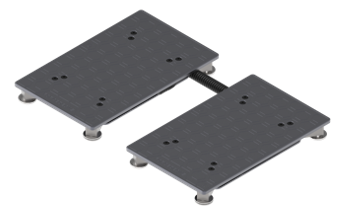 | |
|
ForceDecks Max Our flagship ForceDecks model, ForceDecks Max, features our largest surface area, suitable for large athletes, high-force tests and both embedded and portable use cases. |  |
A Quick Note on Accuracy and Reliability
For the purposes of this guide, we won’t dive into detail on ensuring the accuracy and reliability of your force plates, as – for most users – it is not something that requires deep consideration. While accuracy and reliability are critically important, most commercially available force plates can be trusted to be more than accurate enough for most users, and there are valuable proof points that can help you quickly build confidence.
ForceDecks, for example, have been externally validated, are featured in over 160 published research papers and are relied on by users with high demands for accuracy and reliability.
ForceDecks’ most prominent validation study was published in 2024 by Collings et al. It compared ForceDecks with gold standard laboratory-grade force plates and found less than a 1% difference in over 200 metrics, with a mean bias of under 2.5N for ground reaction forces and 0.1mm for center of pressure (CoP) across all analyzed tests.
These results allow users to trust in the accuracy and reliability of ForceDecks in a wide range of dynamic, isometric and balance tests. It also underpins why they are used and trusted by organizations such as NASA, the Mayo Clinic, every Premier League team and over 90% of Major League franchises.
[A 2024 study] compared ForceDecks with gold standard laboratory-grade force plates and found less than a 1% difference in over 200 metrics…[this] underpins why they are used and trusted by…NASA, the Mayo Clinic, every Premier League team and over 90% of Major League franchises.

For most users, collecting accurate data will be influenced far more by human factors than by the accuracy of the plates themselves. Ensuring you use consistent, reliable protocols and cues and analyzing your data in a consistent manner (e.g., using the same type of force plates, software and metrics each time) are the best steps you can take to ensure your data is accurate and reliable – and best of all, these steps are free!
To help you further understand which style of force plates is right for you (whether that is ForceDecks or another model of force plates), we have collated some important considerations.
What movements or tests do you want to perform?
The overwhelming majority of force plate users in health and performance settings perform tests in four main categories:
- Jumps: Such as countermovement jump (CMJ), squat jump or drop jump;
- Isometric Strength: Such as shoulder I-Y-T, isometric mid-thigh pull (IMTP) or run-specific isometrics;
- Balance: Such as quiet stand or single leg stand; and
- Functional Movements: Such as squats, push-ups or sit-to-stand tests.
Each of these categories of tests can be automatically and comprehensively analyzed using ForceDecks force plates and the sophisticated software that powers it.
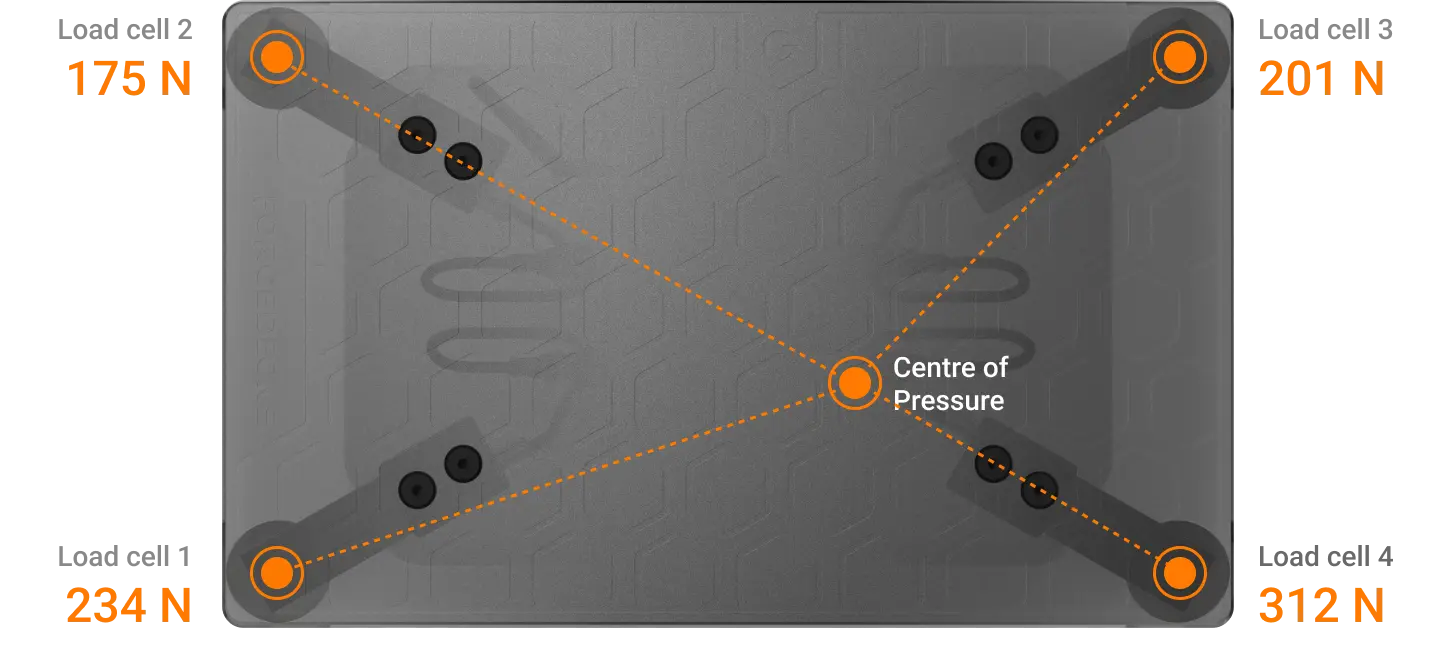
A more complex setup, such as triaxial plates, is likely to be overkill for these types of movements unless you are interested in analyzing gait, running or other multi-planar movements.
What data (and which metrics) do you want to analyze?
This is where the capabilities of the software that collects and interprets data from the force plate hardware is critically important. Software functionality is likely to be the most important consideration for professionals who are managing patients and athletes.
Software functionality is likely to be the most important consideration for professionals who are managing patients and athletes.
The ability – or lack thereof – for your force plates’ software to capture data, interpret it in real-time and present it in a fast and easy yet meaningful way can make or break your experience of using force plates, both for you and for your patients or athletes. VALD’s business model is focused on constant innovation, and this is particularly evident in ForceDecks software, its functionality and how data is presented.
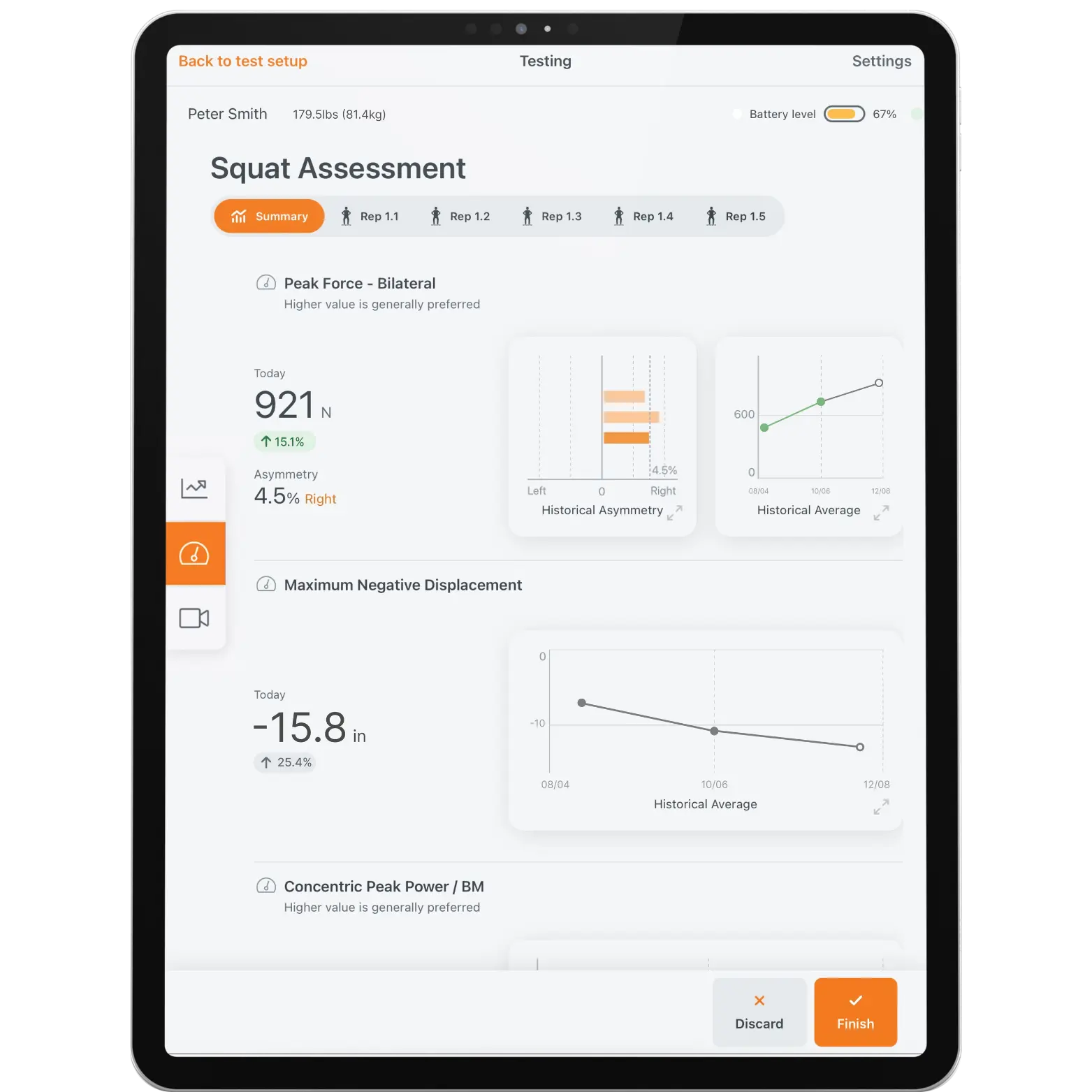
ForceDecks can automatically analyze more tests and calculate more metrics than any other commercially available force plate system. Even more importantly, it is unmatched in its ability to help make sense of this data. This includes integrated Norms (normative data) conveniently overlaid on individuals’ profiles to give valuable context to their performance.
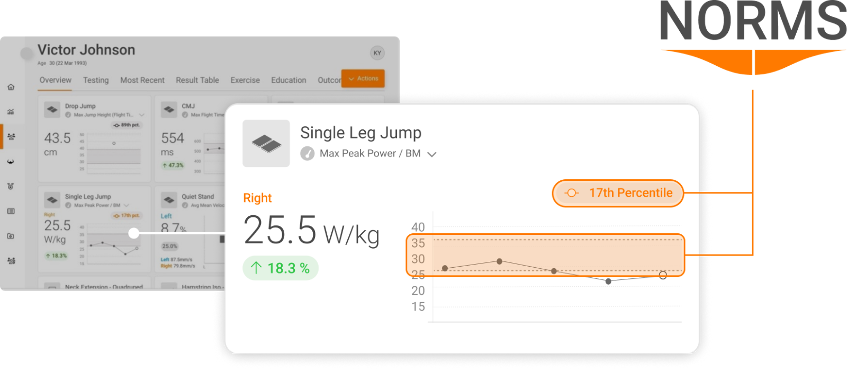
ForceDecks Norms (normative data) integrated into VALD Hub.
Where are you going to use your force plates?
Are you regularly on the move between locations? If so, portability is an important consideration, and factors such as the physical size, weight and travel case accessories need to be accounted for.
Are you regularly on the move between locations? If so, portability is an important consideration, and factors such as the physical size, weight and travel case accessories need to be accounted for.
All ForceDecks models are technically portable, but ForceDecks Lite (9kg/20lb per plate) and ForceDecks Mini (5kg/11lb per plate), in particular, have been designed for professionals who need to travel with their force plates.
This is enabled not only through their weight and size but also their onboard batteries and wireless Bluetooth connectivity, plus their specifically designed travel cases to protect them in transit. ForceDecks Lite and ForceDecks Mini have been manufactured to adhere to most airlines’ baggage weight limits, allowing them to fly as checked luggage.
 |  |  | |
|---|---|---|---|
| Specification (per plate) | ForceDecks Mini | ForceDecks Lite | ForceDecks Max |
| Weight | 5kg / 11lb | 9kg / 20lb | 20kg / 45lb |
| Surface Area | 22.5 x 40cm / 9 x 16in | 30 x 48.5cm / 12 x 19in | 35 x 70cm / 14 x 28in |
| Load Capacity | 1,000kg / 2,200lb | 2,000kg / 4,400lb | 2,000kg / 4,400lb |
| Sampling Rate | Up to 1,000Hz | Up to 1,000Hz | Up to 1,000Hz |
| Battery Capacity | 20 hours of active use | 50 hours of active use | 50 hours of active use |
| Wireless Communication | Bluetooth 5 | Bluetooth 5 | Bluetooth 5 |
Need more detail? Check out all ForceDecks specifications.
Who are you using force plates with?
Are you testing elite athletes, orthopedic post-operative patients, neurological patients, aging populations or a combination of all the above? In addition to the points already discussed above (what tests and metrics and where you will be doing these tests), the main considerations when it comes to who you will be testing are:
- Sampling Rates: 1,000Hz is considered the “industry standard” and is considered mandatory for any fast movements or for measuring rate of force development (RFD).
- Load Capacity: 1,000kg is more than sufficient for all strength testing, although, for very large and very strong athletes, 2,000kg may be preferable due to the potential for very high landing forces in jump tests.
- Space: Is there enough room in your environment to fit the force plates and any accessories, such as IMTP racks or safety surrounds?
- Foot Size: As strange as it might sound, this is a common consideration – particularly when working with elite athletes and jump tests. If the plate is too small, there is a risk of landing on the edge of the plate (or entirely off the plate), which means landing forces will not be captured accurately.
All ForceDecks models are built to enable all types of testing (jumps, functional movements, balance and isometrics), so we encourage our clients to primarily weigh up ease of portability against size and appropriateness of surface area for their environment, patients and use cases.
...we encourage our clients to primarily weigh up ease of portability against size and appropriateness of surface area for their environment, patients and use cases.
For example, ForceDecks Mini can accommodate jumping tests, but due to their size (a little bit larger than a US men’s size 11 shoe), the margin for error of landing on an edge is increased compared with ForceDecks Lite, which is also portable.

What is your budget and which technology partner are you choosing?
Once you have decided to invest in force plate technology and you know the features you need, one of your final considerations should be to determine which brand/s and model/s fit your budget. After all, even though many health and performance professionals might want to analyze gait and running, most organizations do not have the budget, space, time or expertise to build and operate research-style gait laboratories.
When comparing force plate options, it is important to understand what pricing model the company works on, what is included and – perhaps most importantly – what is not included.
At VALD, we offer a transparent subscription pricing model that grants clients access to hardware, software, support, continuous innovation and data-informed insights, all at one price. It is also all-inclusive of a comprehensive warranty and continuous training and education, providing peace of mind that your product will be supported and that you and your team will be ready to get the most out of your force plate system.
At VALD, we offer a transparent subscription pricing model that grants clients access to hardware, software, support, continuous innovation and data-informed insights, all at one price. It is also all-inclusive of a comprehensive warranty and continuous training and education.
Some examples of unique features that have resulted from ForceDecks’ continuous innovation over the years (each of which has been rolled out to all ForceDecks users at no additional cost) include:
VALD Hub: Our centralized platform for all VALD products and data, featuring reporting, administration, insights, digital health tools and integrated normative data.
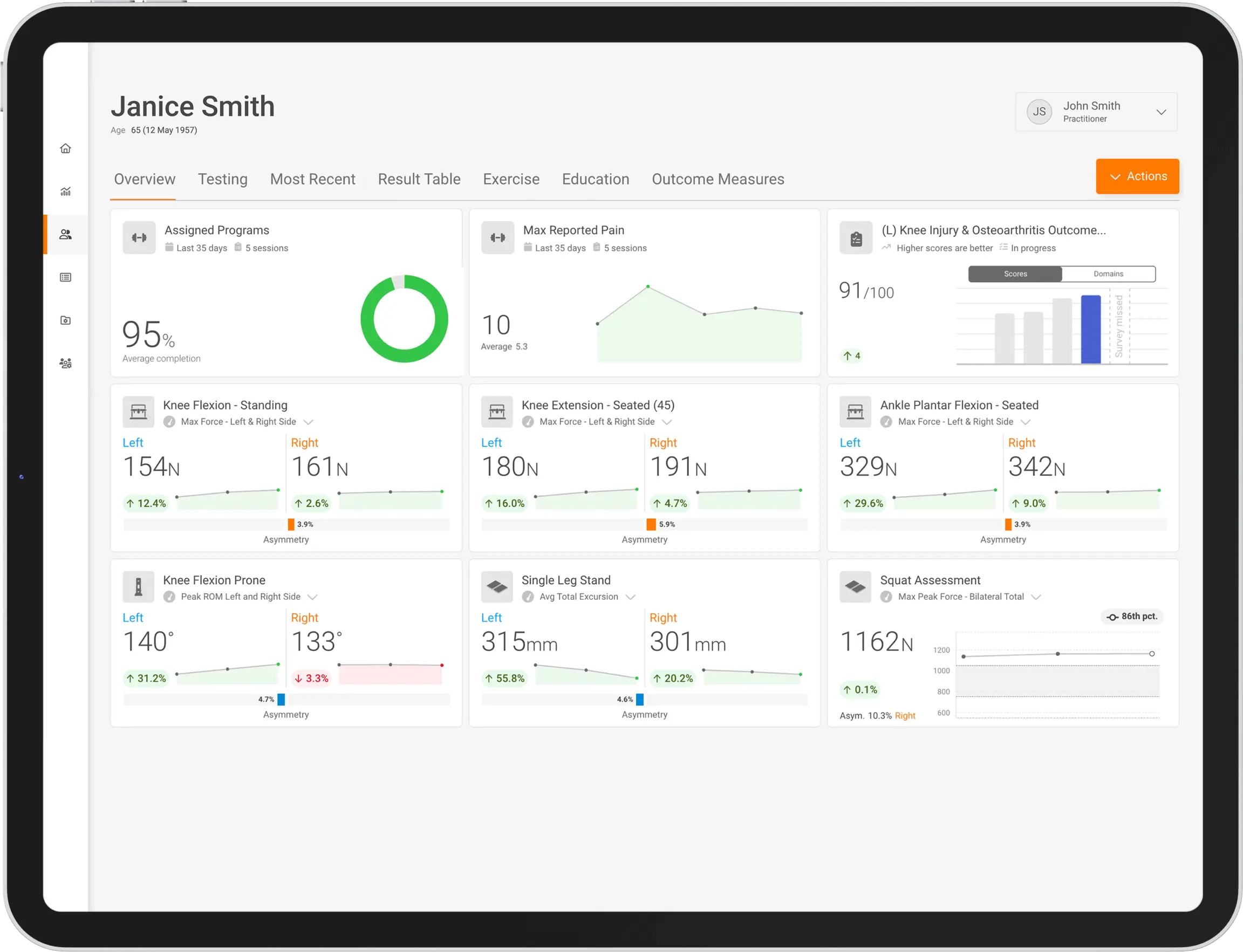
ForceDecks Vision: A proprietary feature of ForceDecks that allows users to record video with their mobile device during a force plate test, which is then automatically synchronized with force data and annotated with key landmarks.
AutoDetect: Enabling over a dozen different tests to be automatically recognized and immediately analyzed without the need to pre-select the test type. This means that any of these tests can be performed in quick succession as part of a test battery.
Users can be confident that when they subscribe to ForceDecks, their force plate technology will remain cutting-edge and operational at all times, and their team will have the knowledge and confidence to get the most out of them.
Help with Force Plate Purchasing Decisions
We know that purchasing force plates can be a daunting process, but at VALD, we want to help you make the right decision – even if it turns out that ForceDecks is not the best choice for you. If you would like help in your decision-making process, contact us at info@vald.com.


